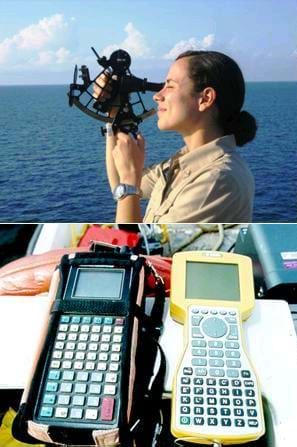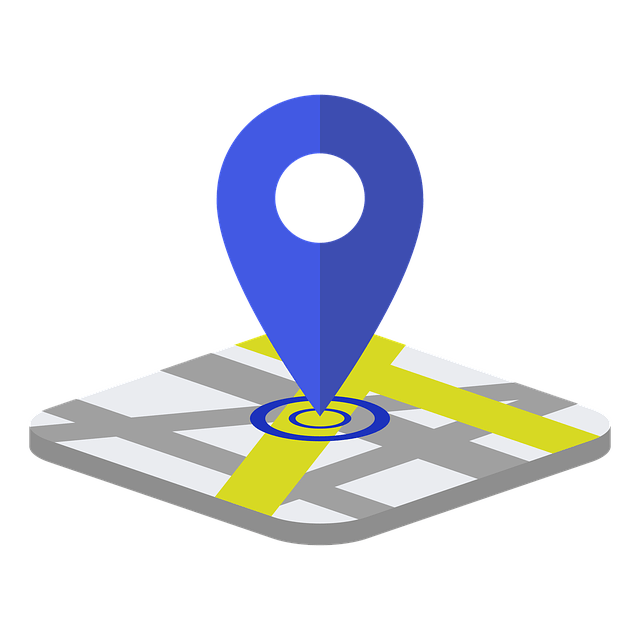
Summary
In this unit, students learn the very basics of navigation, including the different kinds of navigation and their purposes. The concepts of relative and absolute location, latitude, longitude and cardinal directions are explored, as well as the use and principles of maps and a compass. Students discover the history of navigation and learn the importance of math and how it ties into navigational techniques. Understanding how trilateration can determine one's location leads to a lesson on the global positioning system and how to use a GPS receiver. The unit concludes with an overview of orbits and spacecraft trajectories from Earth to other planets.Engineering Connection
Many types of engineering are important to the development of navigational equipment used for travel on sea, in space and on land. Understanding the science of natural phenomena enables engineers to design and create structures and systems for a variety of navigational purposes. Mathematics is also essential to the development of navigational equipment. Satellites designed and tested by engineers use equations that take into account the relative effects of space and time.
Engineering is built upon a network of knowledge extending back in time. Even though celestial navigation is for the most part historical, the best engineers understand how things used to be done, building on the same mathematics concepts—such as geometry and trigonometry—used by engineers every day. Engineers make predictions and analyze circumstances related to motion; they must understand the relationships between speed, time and distance. They use many techniques that often involve computers to help process the many calculations required to make good estimations.
Engineers design systems that require precise and known locations, and often use triangulation calculations. They use triangulation with ground data to determine where in space satellites are located. Accurately determining a satellite's location is important to adjusting its position to keep it on course. The global positioning system (GPS) uses the same concept of triangulation; the development of this now-ubiquitous system was made possible by the contributions from many engineering disciplines. Mechanical engineers created satellite and other GPS equipment that performs reliably in the unique environment of space. Electrical engineers designed computers, circuit boards, power systems and wiring. Aerospace engineers determined satellite arrangement and orbit around the planet. Programming by software engineers enabled the satellites to operate on their own and transmit useful data to Earth receivers.
Engineering is vitally important to the creation of technology used in space, on water and on land. Without engineers, our ability to navigate our world and beyond would be much more difficult. The possibilities for future developments are only limited by our imaginations.
Educational Standards
Each TeachEngineering lesson or activity is correlated to one or more K-12 science,
technology, engineering or math (STEM) educational standards.
All 100,000+ K-12 STEM standards covered in TeachEngineering are collected, maintained and packaged by the Achievement Standards Network (ASN),
a project of D2L (www.achievementstandards.org).
In the ASN, standards are hierarchically structured: first by source; e.g., by state; within source by type; e.g., science or mathematics;
within type by subtype, then by grade, etc.
Each TeachEngineering lesson or activity is correlated to one or more K-12 science, technology, engineering or math (STEM) educational standards.
All 100,000+ K-12 STEM standards covered in TeachEngineering are collected, maintained and packaged by the Achievement Standards Network (ASN), a project of D2L (www.achievementstandards.org).
In the ASN, standards are hierarchically structured: first by source; e.g., by state; within source by type; e.g., science or mathematics; within type by subtype, then by grade, etc.
See individual lessons and activities for standards alignment.
Subscribe
Get the inside scoop on all things TeachEngineering such as new site features, curriculum updates, video releases, and more by signing up for our newsletter!Unit Schedule
The following schedule provides a suggested order of the lessons and activities. However, you may choose to only teach some of the activities – as your time and priorities permit.
- Where Is Here? lesson
- Nidy-Gridy: Using Grids and Coordinates activity
- Northward Ho! Create and Use Simple Compasses activity
- Find Your Own Direction activity
- How to be a Great Navigator! lesson
- Vector Voyage! activity
- The North (Wall) Star activity
- Navigating by the Numbers lesson
- Stay in Shape activity
- Trig River activity
- Accuracy, Precision and Errors in Navigation: Getting It Right! lesson
- Close Enough? Angles & Accuracy of Measurement in Navigation activity
- Computer Accuracy activity
- Sextant Solutions activity
- Topo Map Mania! lesson
- Where Is Your Teacher? activity
- The Trouble with Topos activity
- Getting to the Point lesson
- Classroom Triangles activity
- Topo Triangulation activity
- Triangulate: Topos, Compasses and Triangles, Oh My! activity
- Navigational Techniques by Land, Sea, Air and Space lesson
- Nautical Navigation activity
- Navigating at the Speed of Satellites lesson
- State Your Position activity
- It's About Time activity
- GPS on the Move lesson
- GPS Receiver Basics activity
- Making GPS Art: Draw It, Walk It, Log It, Display It! activity
- GPS Scavenger Hunt activity
- Not So Lost in Space lesson
- A Roundabout Way to Mars activity
More Curriculum Like This

In this lesson, students investigate the fundamental concepts of GPS technology — trilateration and using the speed of light to calculate distances.

Students explore the concept of triangulation that is used in navigation satellites and global positioning systems designed by engineers. Also, students learn how these technologies can help people determine their positions or the location of someone else.

Students explore using a GPS device and basic GIS skills. They gain an understanding of the concepts of latitude and longitude, the geocaching phenomenon, and how location and direction features work while sending and receiving data to a GIS such as Google Earth.

Students learn about the remote sensing radio occultation technique and how engineers use it with GPS satellites to monitor and study the Earth's atmospheric activity.
Copyright
© 2009 by Regents of the University of ColoradoContributors
See individual lessons and activities.Supporting Program
Integrated Teaching and Learning Program, College of Engineering and Applied Science, University of Colorado BoulderAcknowledgements
The contents of this digital library curriculum were developed under grants from the Satellite Division of the Institute of Navigation (www.ion.org) and the National Science Foundation (GK-12 grant no. 0338326). However, these contents do not necessarily represent the policies of the National Science Foundation and you should not assume endorsement by the federal government..
Last modified: February 28, 2022







User Comments & Tips